By Dan Weisz
We do have Bluebirds in the Tucson area, but not during the summers. At this time of year, you need to go high up in the Sky Islands (Rose Lake and above in the Catalinas) if you want to see Western Bluebirds. But we do have other birds nearby that have a very pretty blue in their plumage. Today I’m featuring three different species that were very common in Madera Canyon during two recent morning visits.
Mexican Jays are resident in southern Arizona year-round in the pine-oak-juniper woodlands of all of the southeastern mountain ranges. They are blue and gray but they are not “Blue Jays”. They are Jays, and they are blue, but they are not Blue Jays- a common bird of the eastern United States.
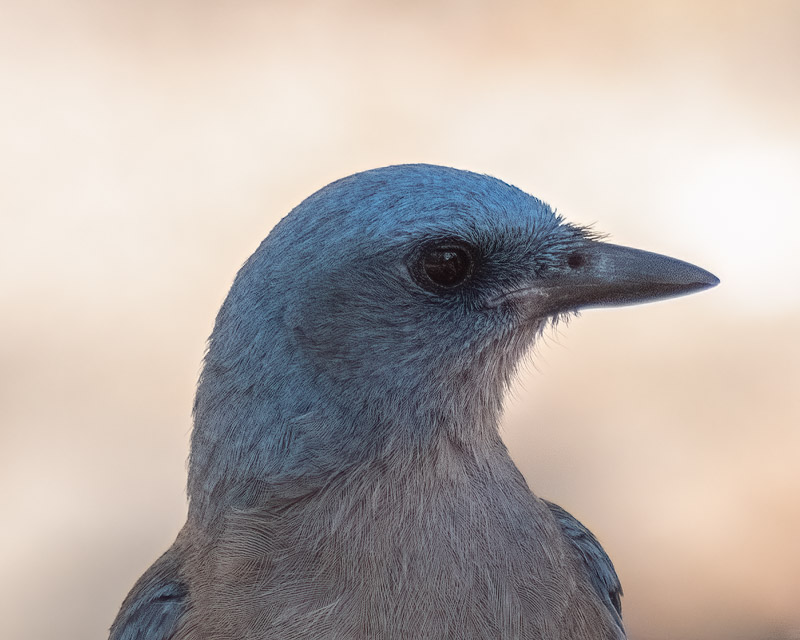
Here is where you find Mexican Jays in the United States:
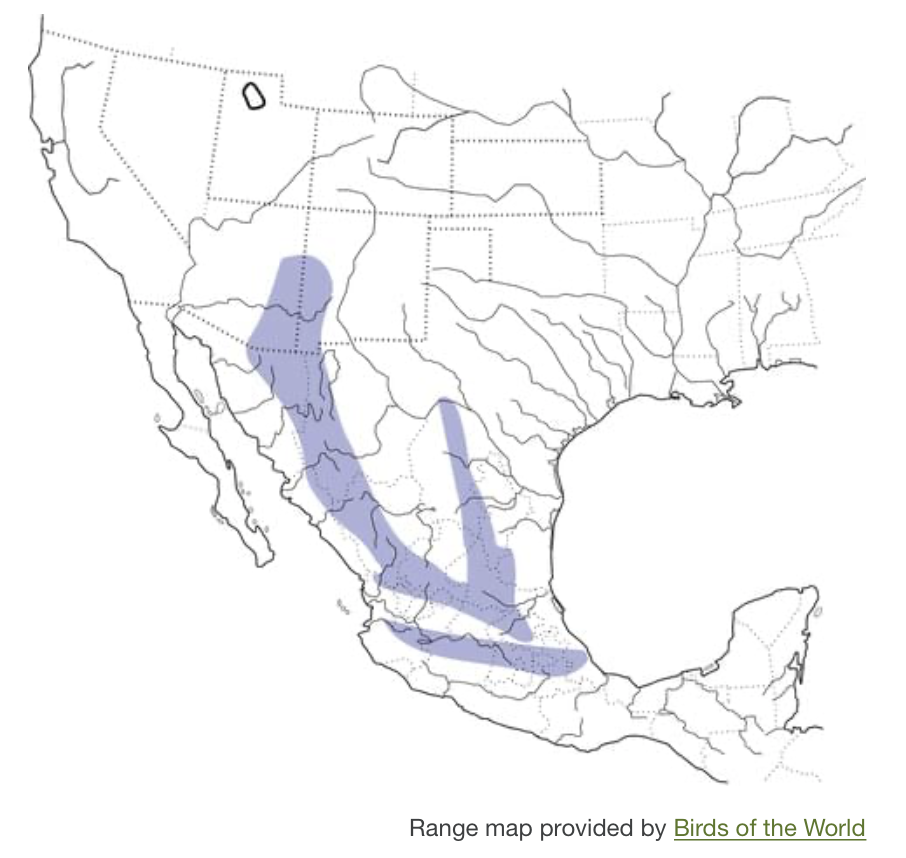
Mexican Jays are in the Corvid family of Jays, Magpies, Ravens and Crows and so are very intelligent birds. They are social and travel in groups. The sound of these groups moving through the canyons is one of the more distinctive sounds in the Sky Islands: https://www.allaboutbirds.org/guide/Mexican_Jay/sounds
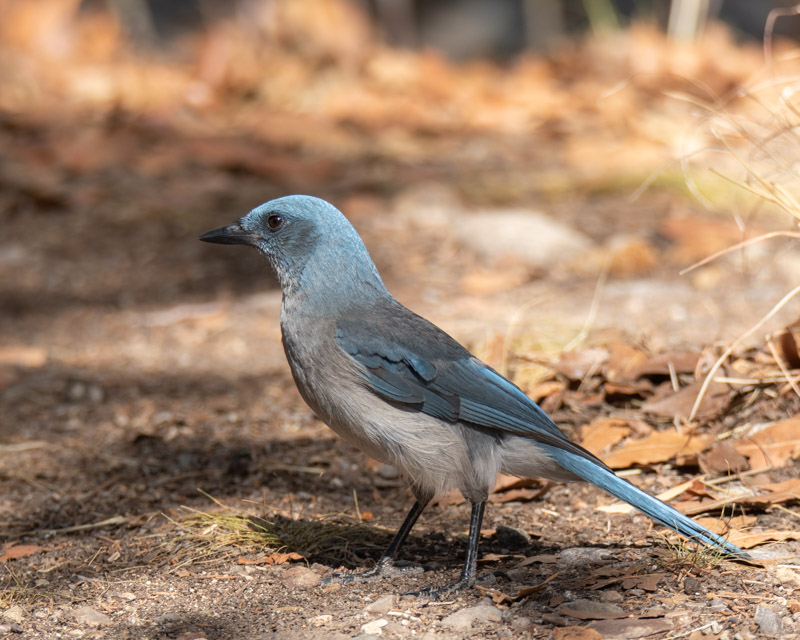
Also at the Santa Rita Lodge were several male Varied Buntings. I definitely see blue there but the “allaboutbirds” site describes these birds as “a stunning mosaic of rich plum, crimson, cherry red, and lavender-violet.” They often remain in and forage in thick vegetation where they appear black in the shadows but when the sun hits them….wow!
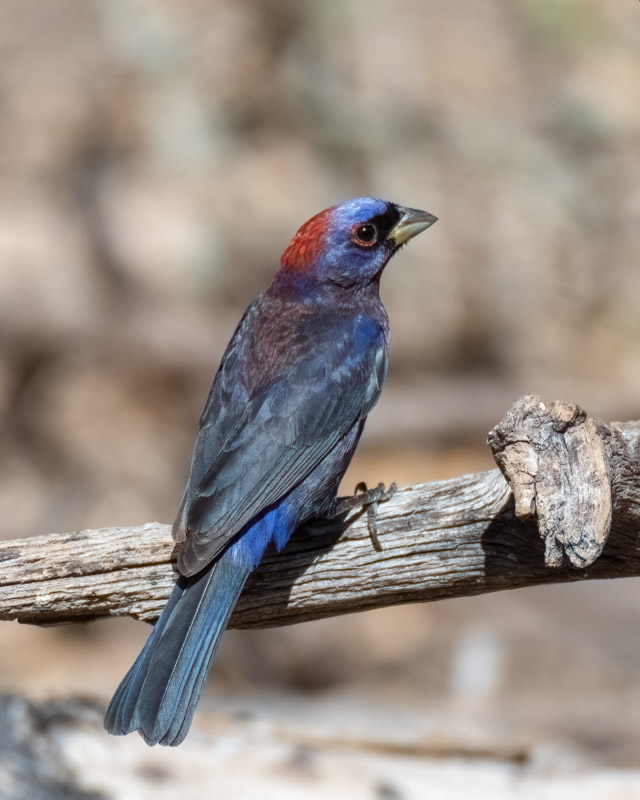
Varied Buntings are another US specialty that can only be seen in a very small part of the country- here in southern AZ- and for just a short period in the summer. They will return back to Mexico in July or August.
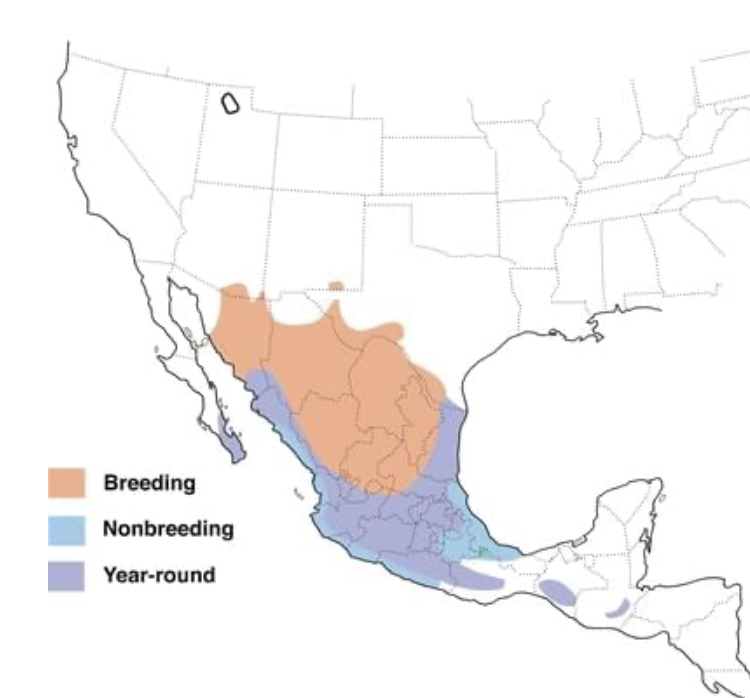
The belly of this male Varied Bunting shows yet another different splash of color!
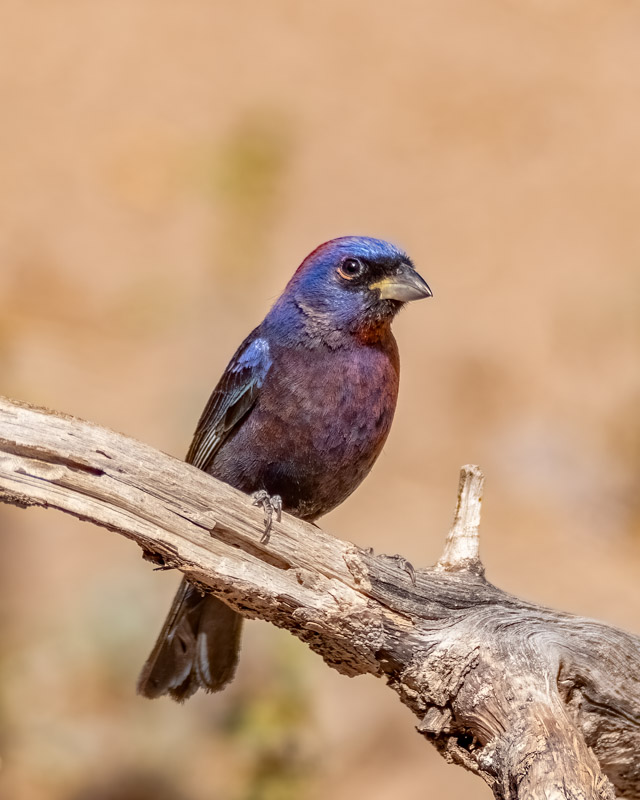
And finally, our third bird that features a strong blue color, although the word blue is not in its name. This is the male Broad-billed Hummingbird. Broad-billed Hummingbirds get their name from their bill which is very broad at the base, but the males are known for their brilliant “sapphire” throat.
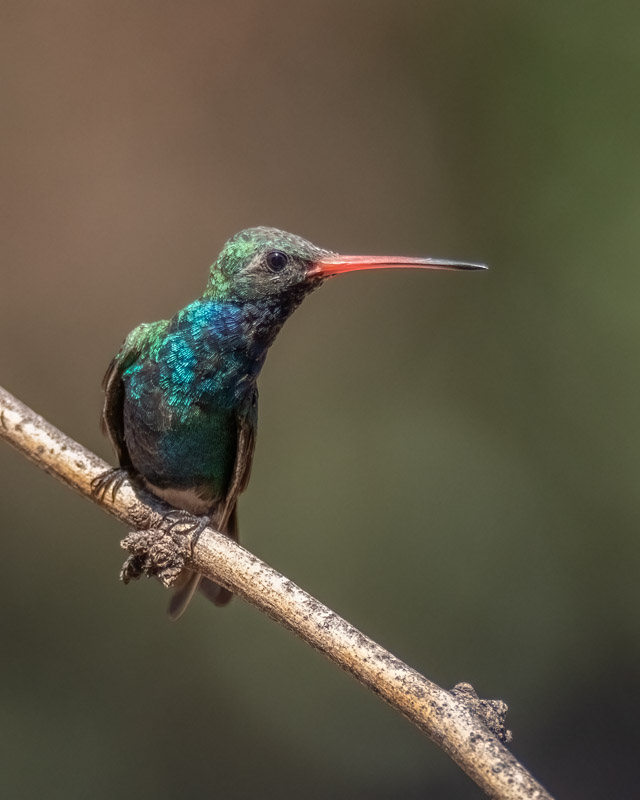
There were so many male Broad-bills flying around and fussing at each other over whose feeder was whose so I am not certain the bird below is the same one as the bird above. They are both perched on the same twig though.
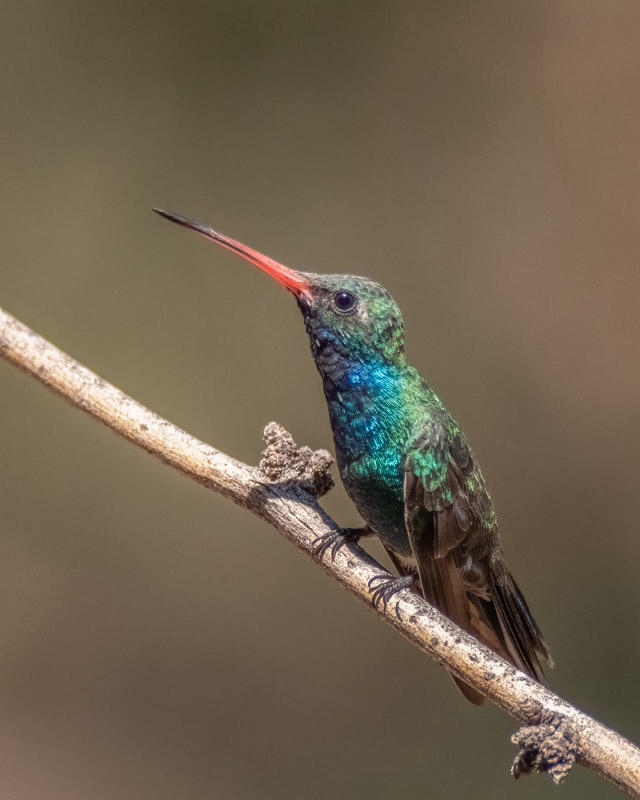
The range map shows that this is yet one more bird that we are fortunate to see in our home-town. If you wish to see Broad-billed Hummingbirds in the US, come to Tucson! Even though the map indicates the bird is only seen here during breeding season, there are Broad-bills that now winter in this area.
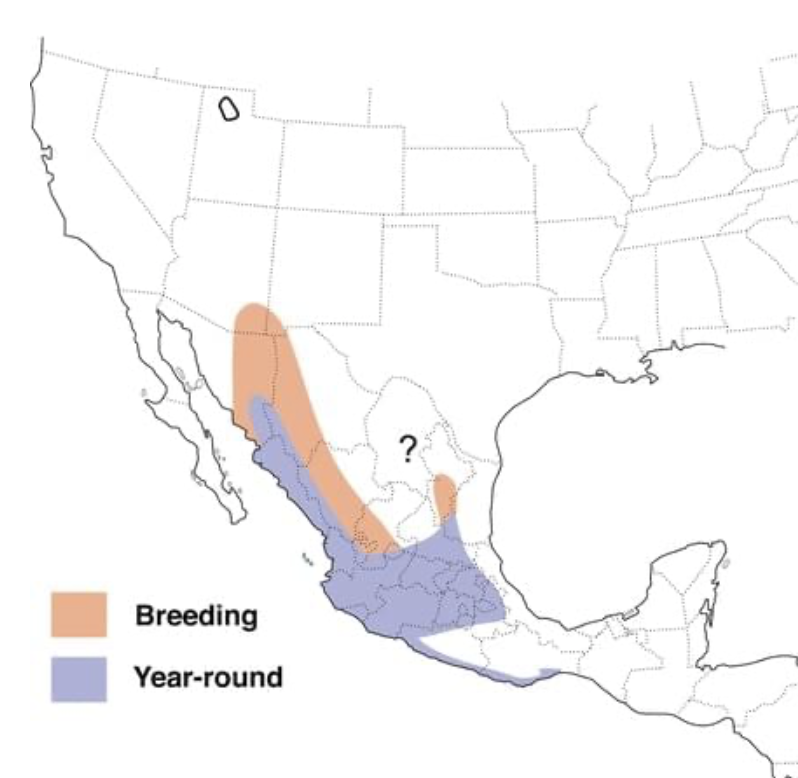
This Broad-bill was defending its perch from other hummingbirds that were flying around. It would raise its wing feathers often as some kind of threat display. Eventually though he flew off too.
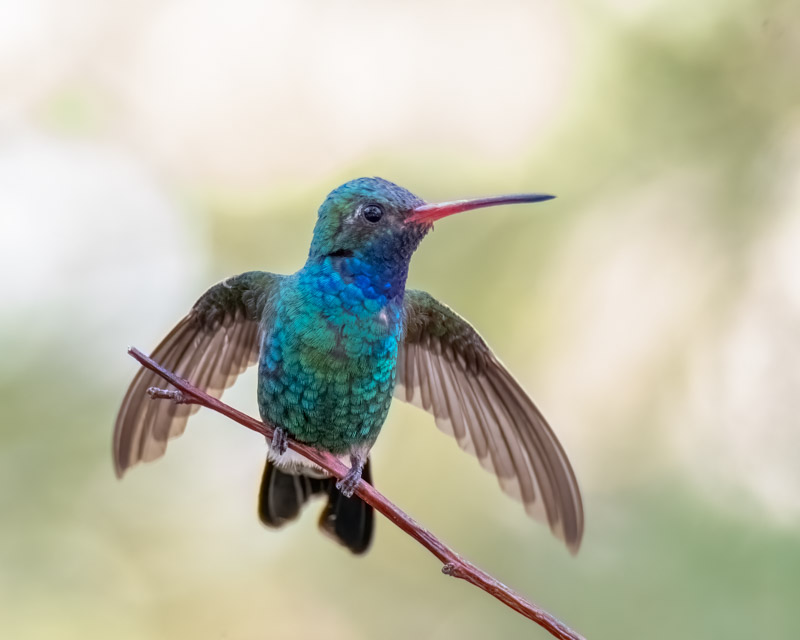
The photo below has a busier background than some of the others but I like it for two reasons. This view of a male Broad-billed Hummingbird shows the full length of it compared to the more squat view in the photo above. I also like how he is holding his wing so you can see right through the very light feathers.
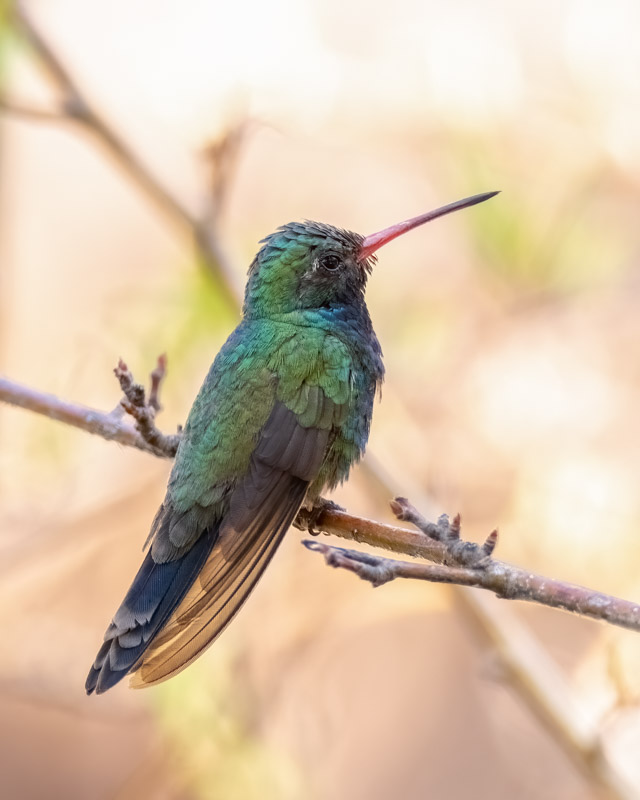
This portrait of a male Broad-billed Hummingbird is perhaps my favorite of the bunch. The background is the side of a cabin perhaps 50 feet away. You can see the Broad-bill’s notched tail, distinctive from other hummingbirds. You can also see a tiny bit of white feathering sticking out underneath the base of his tail. Those white undertail covert feathers are often hidden in this bird. Those are the feathers that smooth the transition between the belly and the tail. In most birds they are the same color as the belly and tail feathers but they are just plain white in this very colorful bird.
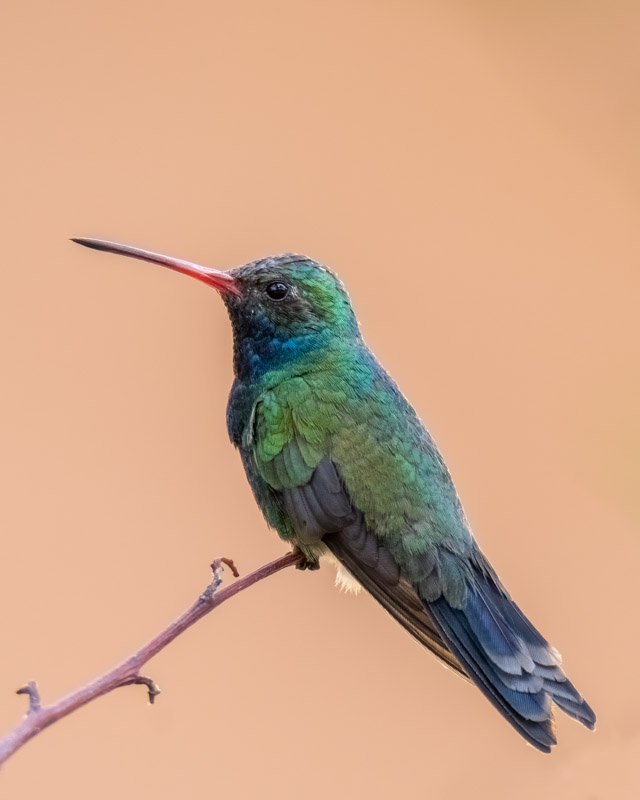
Seeing these colorful birds with blue made me feel anything but blue!
